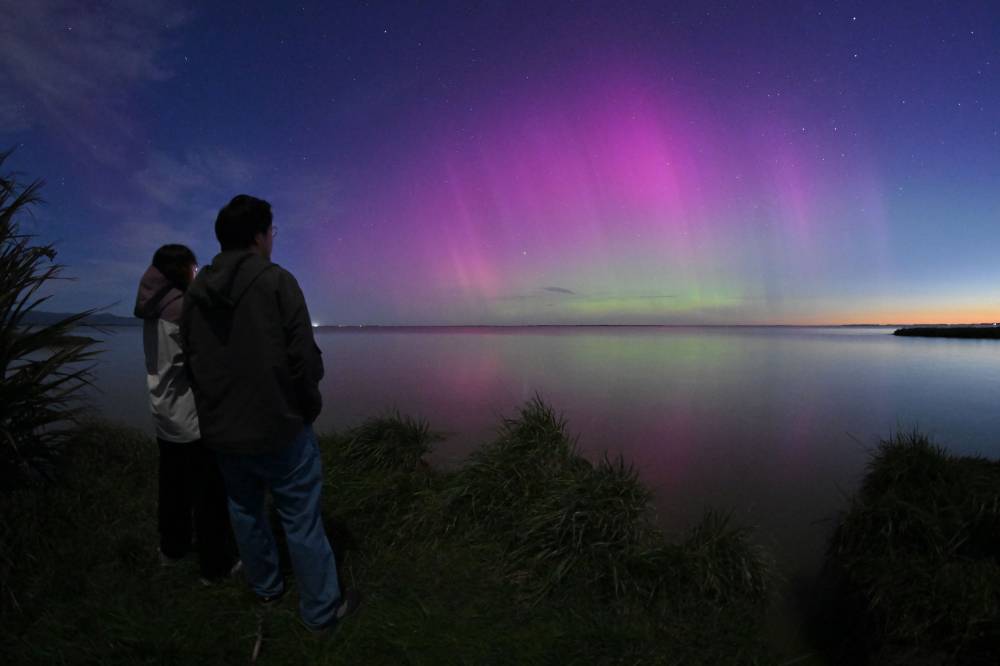Skygazers treated to another aurora show

PARIS—Scientist Jim Wild has traveled to the Arctic Circle numerous times to study the northern lights, but on Thursday night he only needed to look out of his bedroom window in the English city of Lancaster.
For at least the second time this year, skygazers in many parts of the world were treated to colorful auroras at latitudes beyond the polar extremes where they normally light up the skies.
The dazzling celestial shows were caused by a gigantic ball of plasma—and an accompanying magnetic field—which erupted from the Sun earlier this week.
When this eruption, called a coronal mass ejection (CME), arrived at Earth at around 1600 GMT on Thursday, it triggered a strong geomagnetic storm.
This storm in turn sparked northern and southern lights—aurora borealis and aurora australis—in swathes of Europe, the United States, Australia and elsewhere.
While Wild could see the shimmering reds and greens from his back garden, he jumped in the car with his family to get a better look away from the bright lights of Lancaster.
“All the little back roads and parking spots were full of people with flasks of coffee and deck chairs looking at the northern lights,” he told AFP.
‘Perfect hit’
“It was a party atmosphere,” he said, comparing the scenes to UFO spotters looking up at the sky in the movie “Close Encounters of the Third Kind.”
While Wild was explaining the phenomenon to his 11- and 13-year-old children, another nearby skygazer approached and asked how come he knew so much about it.
“Well, actually, this is what I study for a living,” responded the professor in space physics at Lancaster University, who specializes in how solar weather disrupts power grids and transport here on Earth.
Auroras were also visible across northern Europe, including near London and Berlin, and as far south in the United States as the state of Virginia.
In the Southern Hemisphere, areas of Australia and New Zealand were also treated to a show, AFP photos showed.
The CME that triggered Thursday’s auroras erupted from a spot on the Sun pointed directly at Earth, said Juha-Pekka Luntama, the head of the European Space Agency’s Space Weather Office.
“It was a perfect hit,” he told AFP.
The CME caused a “severe” geomagnetic storm given a rating of G4.
AFP is one of the world's three major news agencies, and the only European one. Its mission is to provide rapid, comprehensive, impartial and verified coverage of the news and issues that shape our daily lives.

















